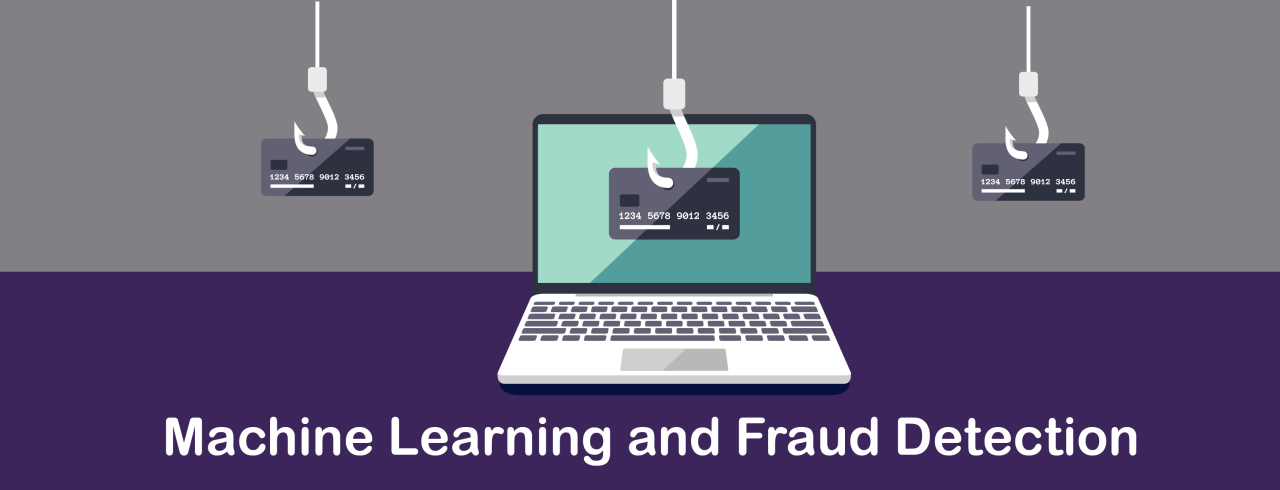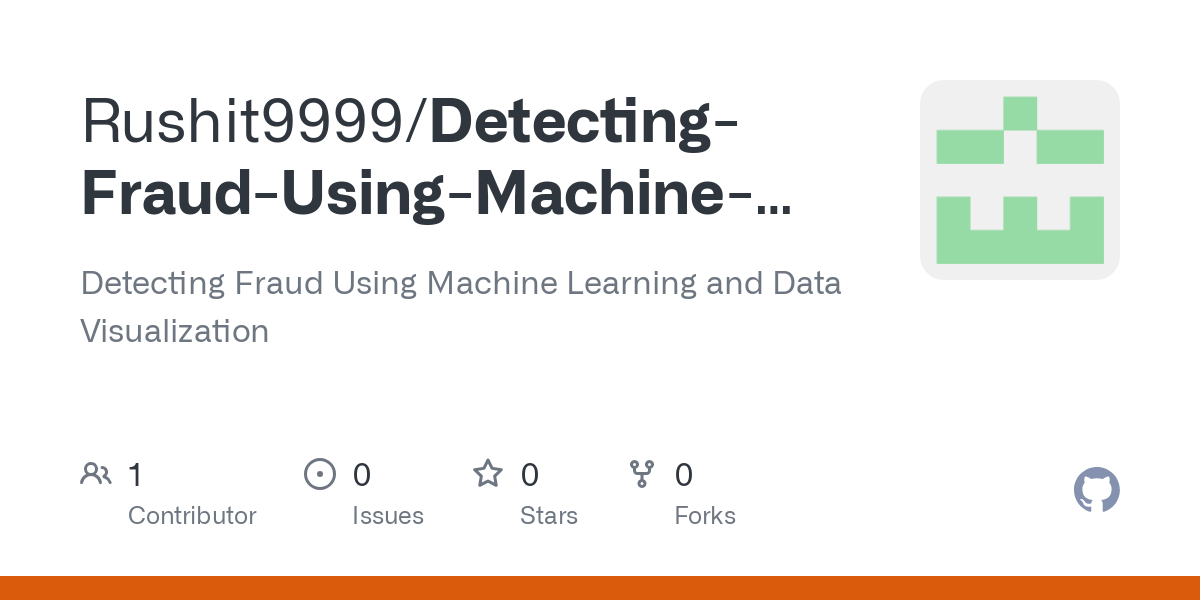The use of machine learning for crypto fraud detection is revolutionizing the fight against financial crime in the volatile cryptocurrency market. Traditional methods struggle to keep pace with the sophisticated and rapidly evolving tactics employed by fraudsters. Machine learning algorithms, however, offer a powerful, adaptive solution, capable of analyzing vast datasets of blockchain transactions, social media sentiment, and market data to identify suspicious patterns and predict fraudulent activities with increasing accuracy.
This exploration delves into the techniques, challenges, and ethical considerations surrounding this critical application of AI.
This analysis examines various machine learning techniques, from supervised learning methods like decision trees and support vector machines to unsupervised approaches such as anomaly detection and clustering. We’ll explore data acquisition strategies, the importance of data preprocessing and feature engineering, and the crucial role of model evaluation metrics in ensuring accurate and reliable fraud detection. Furthermore, we’ll discuss the practical deployment of these models, ethical considerations, and the exciting avenues for future research in this rapidly developing field.
Introduction to Crypto Fraud and Machine Learning

The decentralized and pseudonymous nature of the cryptocurrency ecosystem presents unique challenges for fraud detection. While offering significant benefits, this lack of centralized control also creates fertile ground for various sophisticated schemes targeting unsuspecting investors. Machine learning (ML), with its ability to analyze vast datasets and identify complex patterns, offers a powerful new approach to combatting these fraudulent activities.Cryptocurrency fraud encompasses a wide range of illicit activities, each exploiting vulnerabilities within the system.
Understanding these schemes is crucial for developing effective countermeasures.
Common Cryptocurrency Fraud Schemes
Several prevalent types of cryptocurrency fraud significantly impact the market’s integrity and investor confidence. Phishing attacks, for instance, involve deceptive emails or websites designed to steal user credentials and private keys. Rug pulls, on the other hand, occur when developers of a cryptocurrency project abruptly abandon the project, leaving investors with worthless tokens. Pump-and-dump schemes manipulate market prices by artificially inflating the value of a cryptocurrency before selling off their holdings at a profit, leaving other investors with substantial losses.
These schemes often rely on social media manipulation and coordinated trading activities. Other forms of fraud include Ponzi schemes, which promise high returns based on investments from new participants, and various forms of money laundering, leveraging the anonymity of crypto transactions.
Limitations of Traditional Fraud Detection Methods in Crypto
Traditional fraud detection methods, often rule-based systems relying on pre-defined thresholds and signatures, struggle to keep pace with the ever-evolving tactics of crypto fraudsters. These methods are often reactive, identifying fraud only after it has occurred, and they are generally ineffective against sophisticated, anomaly-based attacks. The sheer volume and velocity of transactions on the blockchain, coupled with the pseudonymous nature of many users, further complicates the application of traditional methods.
Moreover, the lack of centralized data repositories makes it difficult to correlate information across different platforms and exchanges.
Enhancing Fraud Detection with Machine Learning Algorithms
Machine learning algorithms offer a proactive and adaptive approach to fraud detection in the crypto space. Unlike traditional methods, ML algorithms can learn from historical data to identify subtle patterns and anomalies indicative of fraudulent activity. Supervised learning techniques, such as support vector machines (SVMs) and random forests, can be trained on labeled datasets of fraudulent and legitimate transactions to classify new transactions with high accuracy.
Unsupervised learning techniques, like clustering algorithms, can identify unusual patterns or outliers that might signal fraudulent behavior without requiring pre-labeled data. Deep learning models, such as recurrent neural networks (RNNs), are particularly effective at analyzing sequential data, such as transaction histories, to detect complex patterns and temporal dependencies. These capabilities enable ML systems to detect even sophisticated and previously unseen fraud attempts.
Comparison of Traditional and ML-Based Fraud Detection Methods
| Method | Strengths | Weaknesses | Applicability to Crypto |
|---|---|---|---|
| Rule-based Systems | Easy to implement, transparent, and well-understood. | Limited adaptability to new fraud patterns, high false positive rates, struggles with complex anomalies. | Suitable for detecting simple, known fraud patterns, but limited effectiveness against sophisticated attacks. |
| Machine Learning (ML) | Adaptable to new fraud patterns, high accuracy in detecting complex anomalies, proactive detection. | Requires large datasets for training, can be complex to implement and maintain, potential for bias in training data. | Highly applicable to detecting various forms of crypto fraud, especially sophisticated and evolving schemes. |
Types of Machine Learning Algorithms for Crypto Fraud Detection

The detection of fraudulent activities within the cryptocurrency ecosystem presents a significant challenge due to the decentralized nature of blockchain technology and the high volume of transactions. Machine learning (ML) offers a powerful toolkit to address this challenge, providing sophisticated methods for identifying anomalous patterns and predicting fraudulent behavior. The choice of ML algorithm depends heavily on the specific type of fraud being targeted and the available data.
This section will explore the application of both supervised and unsupervised learning techniques in crypto fraud detection.
Supervised Learning Algorithms for Crypto Fraud Detection
Supervised learning algorithms are trained on labeled datasets, where each data point is tagged as either fraudulent or legitimate. This allows the algorithm to learn the distinguishing features between these two classes and subsequently classify new, unseen transactions. Several algorithms are particularly well-suited for this task.Decision trees, support vector machines (SVMs), and random forests are prominent examples. Decision trees create a tree-like model of decisions and their possible consequences, enabling the classification of transactions based on a series of criteria.
SVMs, on the other hand, aim to find the optimal hyperplane that maximally separates fraudulent and legitimate transactions in a high-dimensional feature space. Random forests, an ensemble method, combine multiple decision trees to improve predictive accuracy and robustness. These algorithms can effectively identify known fraud patterns, such as wash trading or pump-and-dump schemes, by learning from historical data where such patterns have been identified and labeled.
For instance, a decision tree might use features like transaction volume, sender/receiver addresses, and transaction frequency to classify a transaction as fraudulent or legitimate.
Unsupervised Learning Algorithms for Crypto Fraud Detection
Unsupervised learning algorithms operate on unlabeled data, identifying patterns and anomalies without prior knowledge of fraudulent behavior. This is particularly useful for detecting novel fraud schemes that may not be represented in historical datasets.Clustering algorithms group similar transactions together, highlighting outliers that may represent fraudulent activities. Anomaly detection algorithms, such as One-Class SVM or Isolation Forest, identify transactions that deviate significantly from the established norm.
These methods are crucial for detecting previously unseen fraud patterns, like sophisticated money laundering schemes or new types of attacks targeting smart contracts. For example, clustering could reveal groups of transactions with unusually high values or frequent interactions between seemingly unrelated addresses, raising suspicion of money laundering. Anomaly detection could flag transactions with unusual timing, amounts, or destination addresses, indicative of potentially fraudulent behavior.
Comparative Analysis of Algorithm Performance and Suitability
The choice between supervised and unsupervised learning depends on the specific fraud detection task and data availability. Supervised learning excels in detecting known fraud patterns using labeled data, offering high accuracy when sufficient labeled data is available. However, it struggles with novel fraud schemes. Unsupervised learning is better suited for detecting unknown or evolving fraud patterns, but may produce a higher rate of false positives.For example, detecting pump-and-dump schemes might benefit from supervised learning using historical data labeled with known pump-and-dump events.
Conversely, identifying previously unknown money laundering operations would likely require unsupervised learning techniques to identify unusual transaction patterns. The performance of each algorithm is also affected by factors such as data quality, feature engineering, and the complexity of the fraud schemes. Often, a hybrid approach combining both supervised and unsupervised methods yields the best results, leveraging the strengths of each approach.
Decision-Making Process within a Random Forest Algorithm
A flowchart illustrating the decision-making process within a Random Forest algorithm for crypto fraud detection could be visualized as follows:[Descriptive text of the flowchart. The flowchart would begin with inputting transaction data (various features such as transaction amount, time, addresses involved, etc.). This data would then be passed to multiple decision trees, each trained on a random subset of the data and features.
Each decision tree would independently classify the transaction as fraudulent or legitimate based on its internal decision rules. The final classification would be determined by aggregating the predictions from all the decision trees – a majority vote or average prediction. The output would be a classification (fraudulent or legitimate) along with a confidence score.]
Data Acquisition and Preprocessing for Model Training

Building a robust machine learning model for crypto fraud detection hinges critically on the quality and preparation of the training data. This section details the crucial steps involved in data acquisition, cleaning, transformation, and feature engineering, addressing the unique challenges posed by the high dimensionality and class imbalance inherent in cryptocurrency datasets.Data acquisition for crypto fraud detection involves sourcing information from diverse and often disparate sources.
Effective model training requires a multifaceted approach, combining various data types to capture a holistic view of fraudulent activities.
Data Sources for Model Training
The efficacy of a machine learning model directly correlates with the comprehensiveness and quality of its training data. Several key data sources contribute to a robust training dataset for crypto fraud detection. These sources offer complementary perspectives, enhancing the model’s ability to identify complex patterns indicative of fraudulent behavior.
- Blockchain Transaction Data: This forms the core of any crypto fraud detection model. Public blockchains provide a wealth of information on transactions, including timestamps, addresses, amounts, and transaction fees. Analyzing these parameters can reveal suspicious patterns, such as unusually large transactions, frequent small transactions (potentially money laundering), or transactions originating from known compromised addresses.
- Social Media Sentiment: The sentiment expressed on social media platforms (Twitter, Reddit, etc.) regarding specific cryptocurrencies or projects can be a leading indicator of potential scams or market manipulation. Analyzing sentiment can help identify projects generating excessive hype or exhibiting signs of pump-and-dump schemes.
- Market Data: Price fluctuations, trading volume, and order book data from cryptocurrency exchanges provide crucial context. Unusual spikes or drops in price, coupled with high trading volume, might signal insider trading or manipulative behavior.
- Know Your Customer (KYC) and Anti-Money Laundering (AML) Data: Where available, KYC/AML data from exchanges can be invaluable in identifying suspicious users or entities. This data, however, often comes with stringent privacy regulations and may not be readily accessible for model training.
Data Cleaning and Transformation
Raw data from these sources is rarely suitable for direct model training. It typically requires extensive cleaning, transformation, and preprocessing to ensure data quality and model performance.
- Handling Missing Values: Missing data points are common. Strategies for handling these include imputation (filling in missing values using statistical methods like mean or median) or removal of records with excessive missing values. The choice depends on the extent of missing data and the potential bias introduced by imputation.
- Data Cleaning: This involves identifying and correcting inconsistencies, errors, and outliers. For example, duplicate transactions might need to be removed, and erroneous transaction amounts corrected.
- Data Transformation: Scaling and normalization techniques (e.g., min-max scaling, standardization) are crucial for optimizing model performance. These methods ensure that features with different scales do not disproportionately influence the model.
Feature Engineering for Blockchain Transaction Data, The use of machine learning for crypto fraud detection
Feature engineering is a critical step in improving model accuracy. It involves creating new features from existing ones to better represent the underlying patterns in the data. For blockchain transaction data, this can include:
- Transaction Frequency: The number of transactions originating from or going to a specific address within a given time window.
- Transaction Value Distribution: Analyzing the distribution of transaction values to identify unusual patterns.
- Network Centrality Measures: Applying graph theory concepts to the blockchain transaction network to identify highly connected addresses, potentially indicative of money laundering or other fraudulent activities. For example, calculating the degree centrality (number of connections) or betweenness centrality (number of shortest paths passing through a node) of an address.
- Address Age and Activity: The age of an address and its historical transaction activity can be indicative of its legitimacy.
Handling High-Dimensional and Imbalanced Datasets
Crypto fraud detection datasets often exhibit high dimensionality (many features) and class imbalance (significantly more legitimate transactions than fraudulent ones). These characteristics pose significant challenges for model training.
- Dimensionality Reduction: Techniques like Principal Component Analysis (PCA) or t-distributed Stochastic Neighbor Embedding (t-SNE) can reduce the number of features while retaining most of the relevant information, improving model efficiency and preventing overfitting.
- Oversampling/Undersampling: To address class imbalance, oversampling (replicating minority class instances) or undersampling (removing majority class instances) can be applied. However, these methods need careful consideration to avoid introducing bias.
- Cost-Sensitive Learning: Adjusting the model’s cost function to penalize misclassifications of the minority class (fraudulent transactions) more heavily can improve the model’s ability to detect fraud.
Model Evaluation and Deployment

Developing a robust machine learning model for crypto fraud detection requires careful evaluation and strategic deployment. Effective model evaluation ensures the chosen algorithm accurately identifies fraudulent transactions while minimizing false positives, impacting operational efficiency and user trust. Deployment considers scalability, security, and integration with existing crypto infrastructure.Model evaluation involves assessing the performance of the trained model using various metrics and techniques to optimize its accuracy and efficiency.
The deployment phase focuses on integrating the model into a live system, considering factors such as scalability, security, and maintainability. A well-deployed model ensures continuous monitoring and adaptation to evolving fraud patterns.
Key Metrics for Model Evaluation
Evaluating the performance of a machine learning model for fraud detection requires a multifaceted approach, employing several key metrics to provide a comprehensive understanding of its capabilities. Precision, recall, F1-score, and AUC (Area Under the ROC Curve) are crucial in assessing the model’s ability to accurately identify fraudulent transactions while minimizing false positives and negatives. These metrics offer different perspectives on the model’s performance, helping to choose the best model for the specific needs of the crypto platform.Precision measures the proportion of correctly identified fraudulent transactions out of all transactions flagged as fraudulent.
Recall measures the proportion of correctly identified fraudulent transactions out of all actual fraudulent transactions. The F1-score provides a balanced measure combining precision and recall, useful when both false positives and false negatives are equally undesirable. The AUC, derived from the ROC curve, represents the model’s ability to distinguish between fraudulent and legitimate transactions across different thresholds. A higher AUC indicates better discrimination.
For instance, a model with a high precision but low recall might identify only a small percentage of actual fraud cases, while a model with high recall but low precision might generate numerous false positives. The optimal balance depends on the specific priorities and risk tolerance of the crypto platform.
Model Selection and Hyperparameter Tuning
Model selection involves choosing the most suitable machine learning algorithm from various options, such as Support Vector Machines (SVMs), Random Forests, or Neural Networks, based on the characteristics of the dataset and the desired performance metrics. Hyperparameter tuning is a crucial step in optimizing the selected model’s performance. This involves systematically adjusting the model’s internal parameters to find the optimal configuration that minimizes errors and maximizes the desired metrics (e.g., maximizing F1-score or AUC).
Techniques such as grid search, random search, and Bayesian optimization can be used for efficient hyperparameter tuning. For example, adjusting the regularization parameter in an SVM or the number of trees in a Random Forest can significantly impact the model’s performance. The optimal hyperparameters are often found through iterative experimentation and evaluation using cross-validation techniques.
Deployment Considerations for Crypto Environments
Deploying a trained fraud detection model in a real-world crypto environment necessitates careful consideration of scalability, security, and maintainability. The model needs to handle a high volume of transactions in real-time without significant latency. Security is paramount, as the model could be a target for adversarial attacks. The deployment infrastructure should be robust and resistant to such attacks.
Regular monitoring and updates are crucial to adapt to evolving fraud patterns and maintain accuracy. Integration with existing systems within the crypto platform is essential for seamless operation. For example, the model’s output needs to be integrated with the transaction processing system to automatically flag suspicious transactions. Furthermore, mechanisms for human review and override of automated decisions should be implemented to handle edge cases and prevent erroneous actions.
Comparison of Model Deployment Strategies
The choice of deployment strategy depends on factors such as budget, technical expertise, and security requirements. Each approach offers a different balance of control, cost, and scalability.
- Cloud-based Deployment: Offers scalability, flexibility, and reduced infrastructure management overhead. Major cloud providers (AWS, Azure, GCP) offer managed machine learning services that simplify deployment and management. However, it introduces dependencies on third-party providers and potential security concerns related to data transfer and storage.
- On-premise Deployment: Provides greater control over the infrastructure and data security. However, it requires significant upfront investment in hardware and expertise for maintenance and management. Scalability can be a challenge, especially with increasing transaction volumes.
- Hybrid Deployment: Combines the benefits of both cloud and on-premise deployments. Critical components or sensitive data might be hosted on-premise, while less critical parts leverage the scalability and cost-effectiveness of the cloud. This approach offers a good balance between control, cost, and scalability, but requires careful planning and integration.
Ethical Considerations and Future Directions

The application of machine learning to crypto fraud detection, while promising, presents significant ethical challenges that must be carefully considered. The inherent complexities of both machine learning algorithms and the decentralized nature of cryptocurrency necessitate a proactive approach to mitigating potential risks and ensuring responsible innovation. Failing to address these ethical concerns could undermine the trustworthiness of the technology and hinder its widespread adoption.The potential for bias in machine learning models is a primary concern.
If the training data reflects existing societal biases, the resulting model may perpetuate or even amplify these biases, leading to unfair or discriminatory outcomes. For instance, a model trained on data predominantly from a single geographic region or demographic group might inaccurately flag transactions from other groups as fraudulent. This could disproportionately impact certain user groups, potentially leading to financial losses and reputational damage.
Furthermore, the opacity of some machine learning models (“black box” models) makes it difficult to identify and rectify these biases, compounding the problem.
Bias Mitigation and Privacy Preservation
Addressing bias requires careful curation of training datasets to ensure representation from diverse user groups and transaction types. Techniques like data augmentation and algorithmic fairness constraints can help mitigate biases during model training. However, achieving true fairness remains an ongoing challenge, demanding continuous monitoring and refinement of models. Privacy preservation is equally crucial. Crypto transactions, while pseudonymous, can still be linked to real-world identities through various means.
Machine learning models used for fraud detection must be designed with strong privacy safeguards to prevent the unauthorized disclosure of sensitive user information. Differential privacy techniques, for example, can add noise to the data without significantly compromising the model’s accuracy, protecting individual user privacy while maintaining the overall utility of the data for fraud detection.
Potential for Misuse of Machine Learning Models
The sophisticated nature of machine learning models makes them susceptible to misuse. Malicious actors could potentially exploit these models for their own gain, either by manipulating the training data to create biased outcomes or by using the models to identify vulnerabilities in the system for fraudulent activities. For example, a compromised model could be used to target specific users or groups based on their transaction patterns, leading to targeted attacks.
Robust security measures, including regular audits and rigorous testing, are vital to prevent such misuse.
Challenges and Opportunities for Future Research
The field of machine learning for crypto fraud detection faces several challenges that necessitate further research. One major challenge is the development of more robust and explainable models. Explainable AI (XAI) techniques are crucial for building trust and transparency in these systems. Understanding why a model flags a particular transaction as fraudulent allows for better error correction and prevents the perpetuation of biased outcomes.
The constantly evolving nature of crypto fraud techniques also presents a significant challenge. Models must be adaptive and capable of learning and responding to new fraud patterns in real-time.
- Incorporating behavioral biometrics into fraud detection models to enhance accuracy and reduce false positives.
- Developing decentralized model training frameworks to improve data privacy and security.
- Exploring the use of federated learning techniques to train models on distributed datasets without compromising user privacy.
- Investigating the application of advanced anomaly detection techniques, such as deep learning-based autoencoders, to identify sophisticated fraud patterns.
- Developing robust methods for evaluating the fairness and transparency of machine learning models in the context of crypto fraud detection.
Final Wrap-Up: The Use Of Machine Learning For Crypto Fraud Detection
In conclusion, the application of machine learning to crypto fraud detection presents a compelling solution to a growing problem. While challenges remain—including data imbalance, model explainability, and ethical considerations—the potential benefits are significant. As machine learning algorithms continue to evolve and datasets expand, we can expect increasingly sophisticated and effective tools to combat crypto fraud, safeguarding the integrity and security of the cryptocurrency ecosystem.
The future of this field lies in developing more robust, explainable, and ethically sound models that can adapt to the ever-changing landscape of cryptocurrency fraud.

